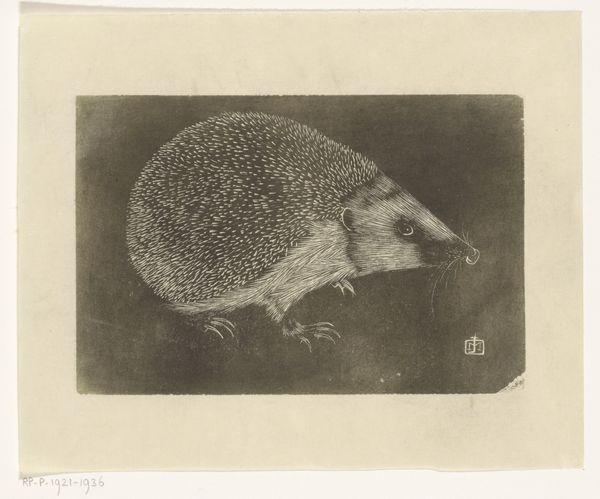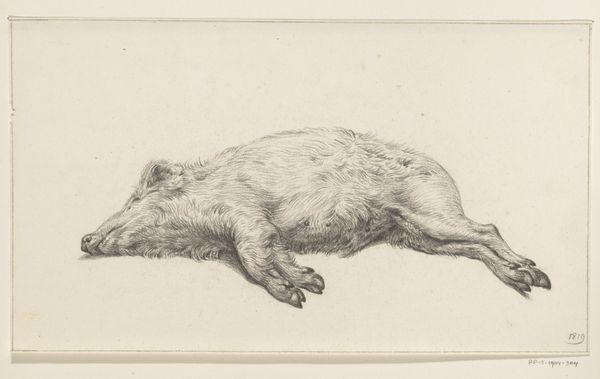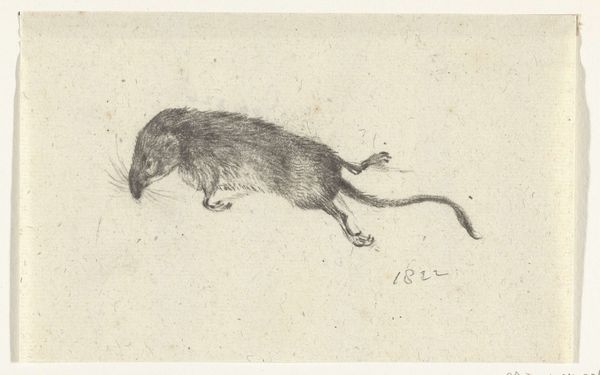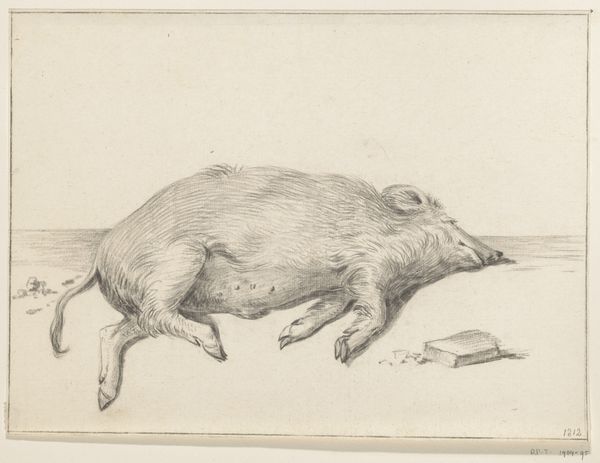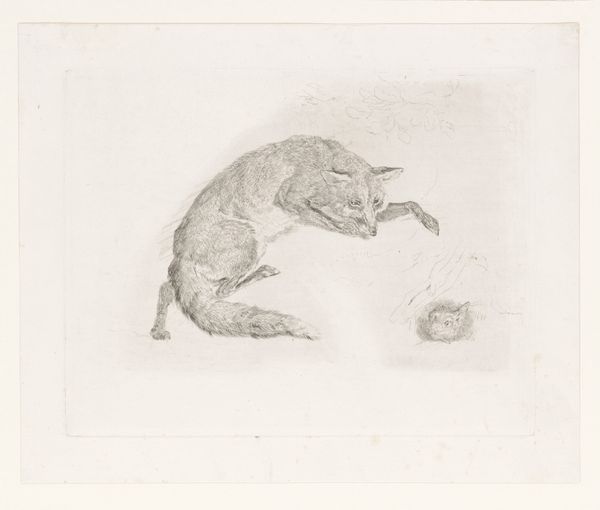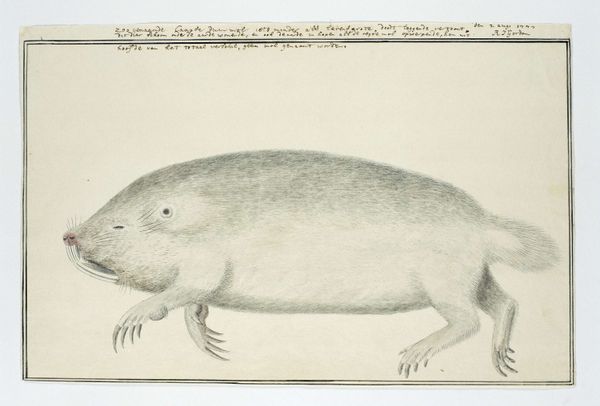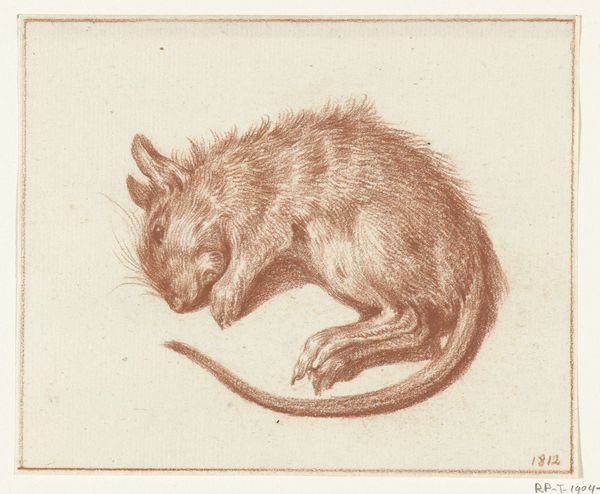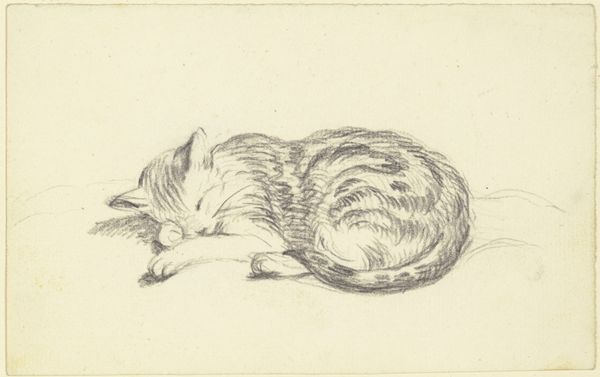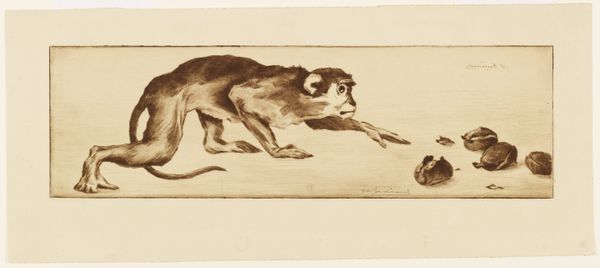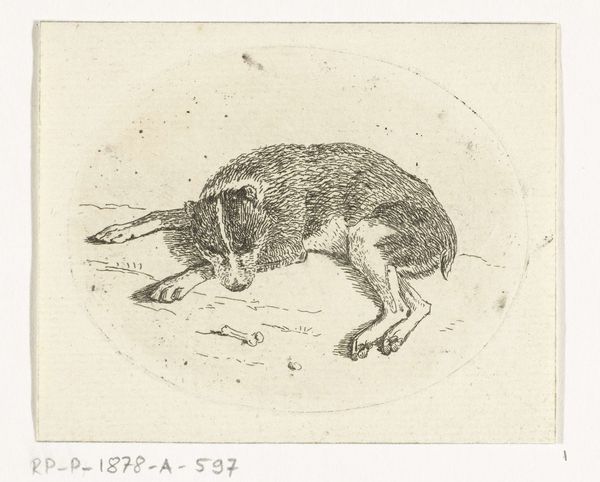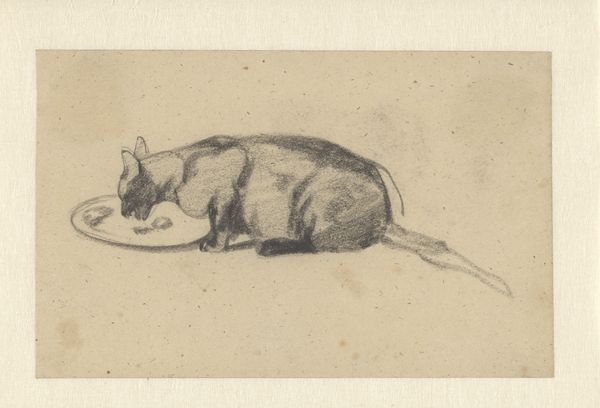
print, etching
# print
#
etching
#
old engraving style
#
pencil drawing
#
realism
Dimensions: height 122 mm, width 167 mm
Copyright: Rijks Museum: Open Domain
Editor: So this is "Egel," an etching by Jan Mankes, created in 1916. The dark background really makes the hedgehog stand out, but there’s also a quiet stillness to the piece. What's your interpretation of the cultural significance here? Curator: That stillness you noticed is interesting. Think about 1916 - World War I was raging. While some artists embraced avant-garde movements fueled by that chaos, Mankes retreats to a quieter observation of nature. It's an act of artistic resistance, focusing on the intimate and personal amidst widespread turmoil. Editor: So the choice of a simple hedgehog becomes significant? It isn’t just a random subject? Curator: Precisely. In focusing on this humble creature, Mankes rejects grand narratives. It becomes a symbolic act, reclaiming art for the everyday, and a reminder of the natural world amidst the destruction of the war. Also, consider the accessibility of the print medium itself. How does the use of printmaking contribute to his artistic aims, would you say? Editor: Well, being a print, it’s more easily reproducible. Making art like this could be seen as a democratic gesture, bringing beauty to a wider audience outside the elite art circles, right? Curator: Exactly. Mankes's art subtly challenged the prevailing notions of art's purpose during wartime, promoting quiet contemplation. Editor: I hadn’t thought about it in terms of resistance before. Thanks, it adds another layer of meaning. Curator: And recognizing that resistance helps us understand not just Mankes, but also the diverse responses artists had during periods of intense social upheaval.
Comments
No comments
Be the first to comment and join the conversation on the ultimate creative platform.
